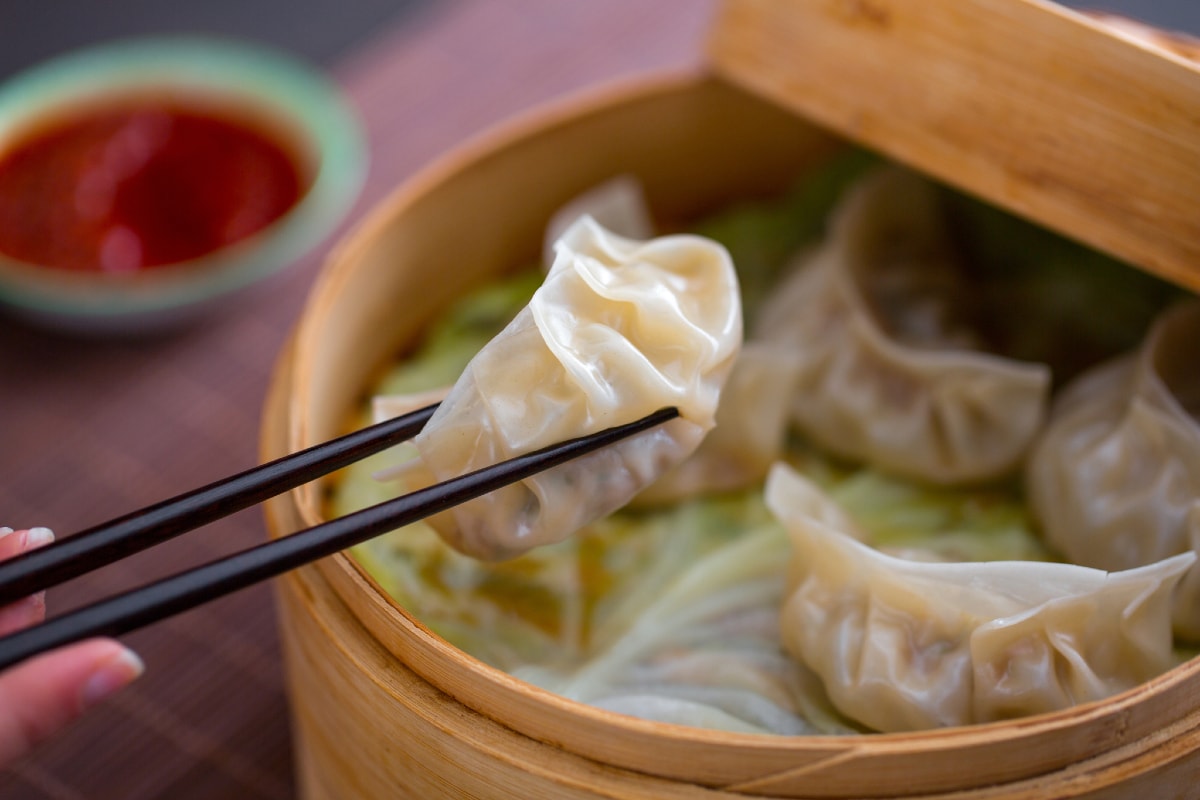Japanese Gyoza (Meat Dumplings)
- Difficult
- 45 min

Typical of the Chinese New Year, like spring rolls, but consumed during all festivities because their shape, reminiscent of an ancient coin, is considered a symbol of good fortune: we are talking about Chinese steamed dumplings! The jiaozi are part of the so-called dim sum, a set of small bites meant to be shared with loved ones: the literal translation of the name means "straight to the heart." On many occasions, friends and family gather to prepare them in abundance, and discussions about the filling, which can be with meat, shrimp, or vegetables, are not uncommon! Among all the varieties, Chef Mulan has chosen to share with us the recipe for meat dumplings, enriched with cabbage and green onion. From the dough making to the various sealing methods, reminiscent somewhat of the baozi, we will discover how to shape these tasty bundles to be steamed or grilled. All you'll need is a bit of dexterity... along with the indispensable chopsticks, essential for dipping the dumplings before tasting! Accompany the steamed Chinese dumplings with soy sauce or spicy sauce and let them strike "straight to the heart" along with other delights of Asian cuisine:
Discover more delicious Asian recipes and elevate your cooking game!

To make Chinese steamed dumplings, first prepare the dough: pour the flour into a bowl and make a well 1, then add a pinch of salt 2 and pour the warm water in a thin stream while you start to mix with chopsticks 3.

Continue kneading by hand to compact the ingredients 4, then transfer the mixture onto a lightly floured work surface and form a dough ball 5. Place the dough ball back in the bowl 6, cover with a cloth and let rest for 30 minutes in a cool, dry place.

In the meantime, focus on the filling: finely chop the green onion, including the green part of the stem 7, then do the same with the cabbage 8. Transfer the chopped green onion and cabbage into a large bowl 9.

Add the ground meat 10, light soy sauce 11, salt, and pepper 12.

Also add the rice wine 13 and the water 14: the amount of water is crucial to get a filling with the right consistency, neither too soft nor too dry. Mix well to blend everything together 15, then let rest for 10 minutes.

There are 2 ways to work the dough, a traditional and a more modern one. We show you the traditional method: form a long roll of dough on a lightly floured work surface 16 and cut it into pieces of about less than 1-inch thick 17. Add a bit more flour and press the pieces of dough with the palm of your hand to create discs. Then use a rolling pin to thin only the edges of the dough disc while turning it with your other hand 18. In this way, it will be thicker in the center, where the filling is placed, and thinner on the edges, which will be joined during the sealing. If you're not very skilled, you can proceed with the second method: in this case, roll out the dough with the help of a pasta machine to a thickness of 1/25 inch, then cut out discs with a pastry cutter 3 inches in diameter.

At this point, you can form the dumplings: lay a dough disc on the palm of your left hand and spread a bit of filling in the center with the help of a knife, leaving the edges clear 19. Position your thumb on one side of the disc and the other fingers on the opposite side, then pinch the edges together with the fingers of your right hand going from one end to the other 20 until the dumpling is perfectly sealed 21. If the dough dries out, you can moisten the edges with a little water to make them adhere better.

For those who are not very skilled, there is also another method: hold the disc as described before and join the edges at the center, pressing to attach them 22. With the index finger, fold the dough from one side and press to seal it 23, then do the same on the other side using your other fingers 24.

Once you have sealed all the dumplings, proceed with cooking: you can use a regular steamer or a bamboo one. Line the bottom with a cabbage leaf, slightly breaking the sides to make it flatter 25, then place the dumplings on top, well spaced apart from each other 26. Bring the water in the steamer to a boil (if you have a bamboo one, you can use a wok), then lower the flame slightly and place the container with the lid. Cook for about 8 minutes 27. Your Chinese steamed dumplings are ready to be enjoyed!